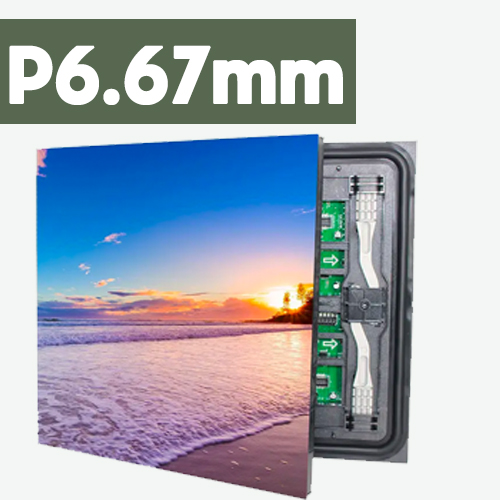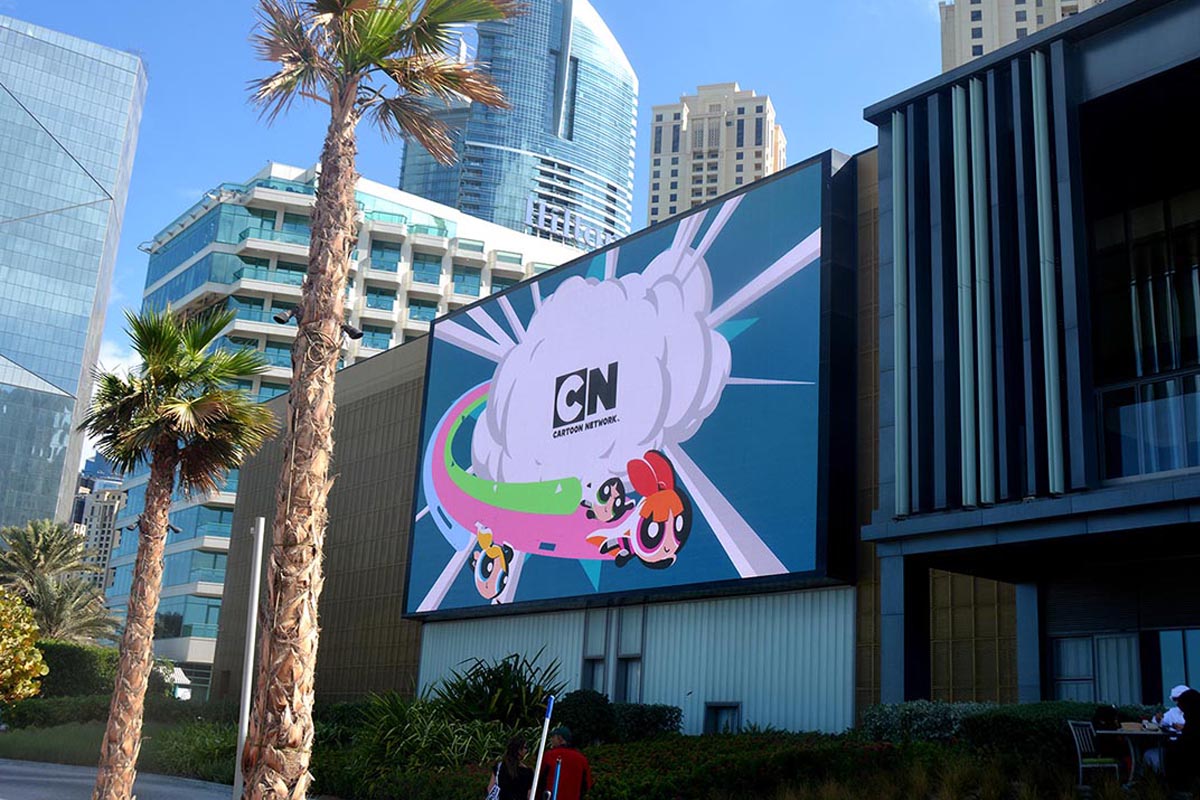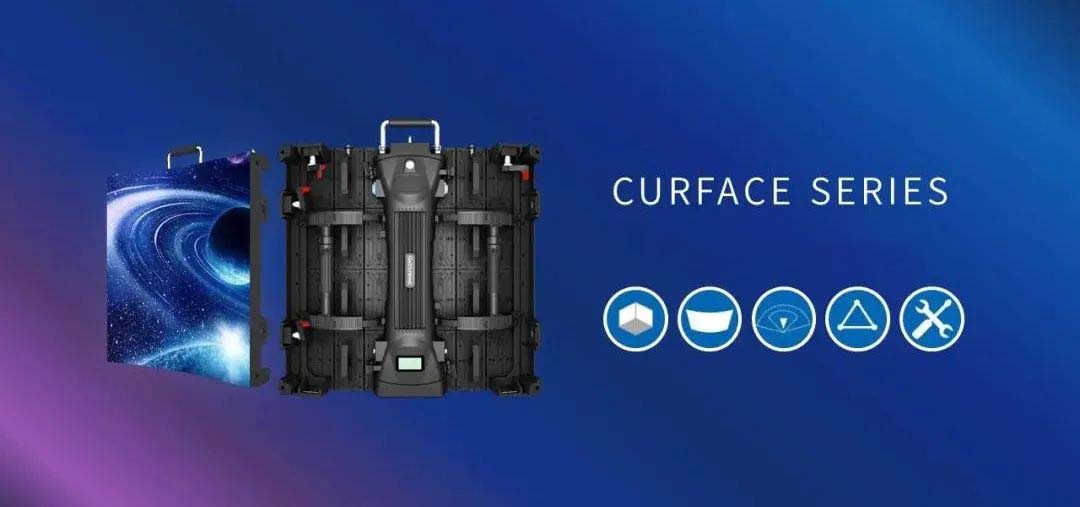As a top provider of used LED displays, IAM used LED wall will guide you through the world of transparent LED displays today. Imagine a display that not only shows vivid images, but also allows you to see through it like a window – sounds incredible, right? Let’s learn more about this amazing technology.
What is a Transparent LED Screen?
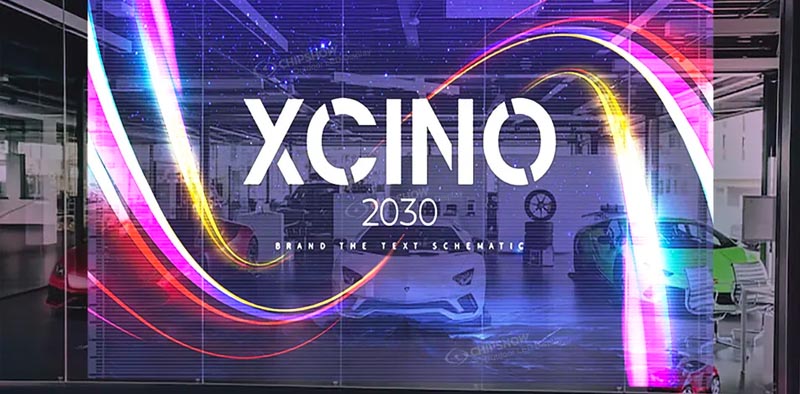
A transparent LED screen is a modern display technology with a transparency rate of 70% to 95%. It’s incredibly thin, only about 10mm thick, and can be seamlessly integrated right behind a glass surface. You can custom-sized these LED displays to fit specific glass dimensions. They can be displayed in natural light and visibility through the glass. In addition, transparent LED displays can blend in with their surroundings while providing eye-catching visuals.
- High Transparency: Offers between 70% and 95% transparency for clear views through windows
- Minimalist Design: Design minimizes visual obstruction from structural components and enhances overall aesthetics and views.
- Easy Installation: Easy installation, often with modular components that simplify the process.
- User-friendly maintenance: Easy maintenance, long-lasting performance with minimal downtime.
- Customizable sizes: They can be customized to fit specific glass dimensions, making them versatile for various applications.
- Lightweight: Despite their size, these screens are relatively lightweight, which helps maintain the structural integrity of installation surfaces.
- Energy Efficient: Consumes less power than traditional displays, more cost-effective and environmentally friendly.
Difference between transparent LED screen and regular LED screen
Here’s the differences between transparent LED screens and conventional LED screens:
| Aspect | Conventional LED Screen | Transparent LED Screen |
|---|---|---|
| Structural Features | Thick and heavy, including frame, modules, and cooling equipment. Hard to maintain. | Sleek with aluminum structure and transparent PC panel. No extra cooling needed. 50% lighter than conventional screens of the same size. |
| Display Quality | Color reproduction may be weak; prone to distortion and blending colors in small spaces. | Clear, bright, and vivid display with high refresh rates, making images appear to float attractively. |
| Installation and Maintenance | Complex structure, heavy, requires steel supports. Wall installations can damage the structure; outdoor setups pose safety risks. Maintenance requires specialized work. | Can be installed indoors due to transparency. Easy to install with movable locks. Modules are not soldered; easy to replace parts with a simple push from behind, simplifying maintenance and saving labor. |
| Product Specificity | Strong durability, can achieve IP67 protection level. Can achieve ultra-high definition with a minimum pixel pitch of P0.8. | Lower protection at IP46 due to exposed LED strips. Minimum pixel pitch of P3, achieving only clear image quality due to the need for transparency. |
Cabinets Materials Used in Transparent LED Screen
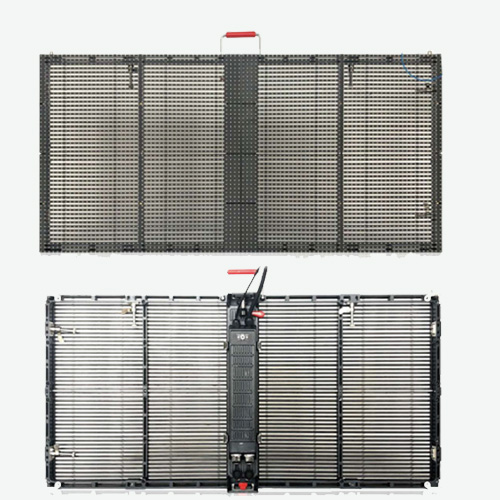
As the popularity of transparent LED screens grows, so does the variety of materials used in their construction. Let’s take a look at the most common materials and their advantages and disadvantages.
Aluminum frames
Pros:
- Durability: Aluminum is tough and can withstand bumps and knocks.
- Customizable: It can be formed into different shapes and painted in different colors, such as black, to increase contrast in certain environments, such as bars or nightclubs.
- Maintenance: It’s easy to handle and assemble.
Cons:
- Aesthetics: While sturdy, aluminum can sometimes detract from the transparency and overall sleek look of the screen.
Acrylic Cabinets
Pros:
- Clarity: Acrylic offers superior transparency, which enhances the clear display effect.
- Aesthetics: It’s more visually appealing and blends better with modern design aesthetics.
Cons:
- Heat sensitivity: Acrylic may not perform as well in high temperatures.
- Durability: It’s more susceptible to scratches and damage than metal cases.
Carbon Fiber Cabinets
Pros:
- Lightweight: Carbon fiber is extremely lightweight, easy to install, and ideal for large or complex installations.
- Heat and corrosion resistance: It stands up well to the elements, making it suitable for both indoor and outdoor use.
Cons:
- Cost: Carbon fiber is generally more expensive, which can be a limiting factor for widespread use.
How to Choose Transparent LED Displays?
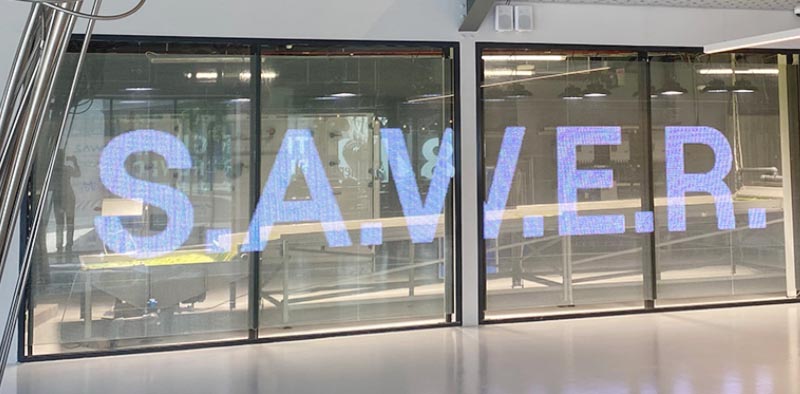
When choosing the right indoor transparent LED display, there are several key factors to consider.
Protection Level: Indoor transparent LED screens typically have an IP30 rating, which is standard for indoor use and does not require waterproof or windproof features.
Brightness: Indoor transparent LED displays typically require lower brightness levels, around 2000 cd/m². Because indoor environments don’t have the same light interference as outdoor environments.
Screen size and pixel pitch: For smaller projects that do not exceed 100 square meters and where viewers are closer, finer pixel pitches such as 3.9/7.8 transparent LED displays are preferable. It can get clearer, more detailed images.
Pitch selection based on area:
For areas around 30m², We recommend you choose a P 7.8 transparent LED display. While pitches such as 10.4 or 12.5 may be too coarse.
For larger areas over 50m², you can choose 3.9, 7.8, and 10.4-pixel pitch. A P3.9 transparent LED display offers clearer images if the budget allows, but a P7.8 LED display is a more economical choice.
Additional considerations:
- Screen dimensions and area: Consider the physical size and total area of the display.
- Application environment: Whether it’s a glass curtain wall, a shopping mall, or a concert venue.
- Viewing distance and installation environment: It’s helpful to have photos or blueprints of the installation site to assess the environmental context.
- Display requirements: Consider what content will be displayed and the desired visual impact.
- Custom requirements: We should consider some Special features such as curved shapes or unique cabinets, depending on the project requirements.
You can learn more P3 Vs. P5 Transparent LED Displays
Conclusion:
Transparent LED screens offer businesses innovative ways to connect with customers. They beautify spaces and display content without compromising on aesthetics or structural design.
When choosing a transparent LED screen, consider different types of cases based on your specific needs. If you are looking for a high-quality transparent LED screen, click here for product information or contact us directly for more professional solutions.
